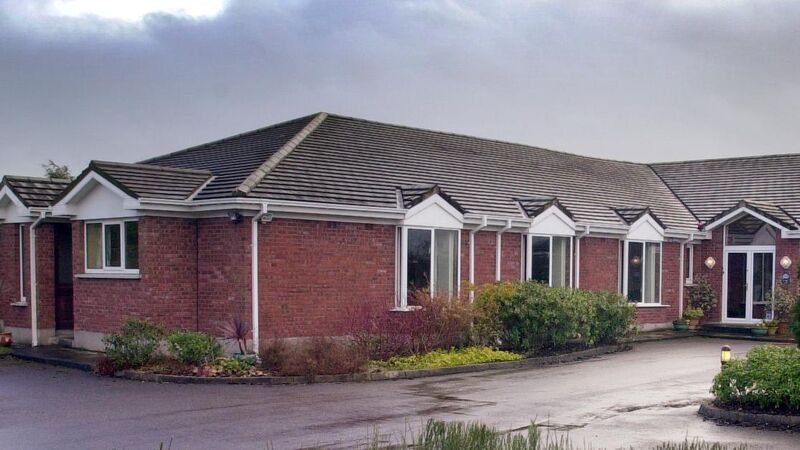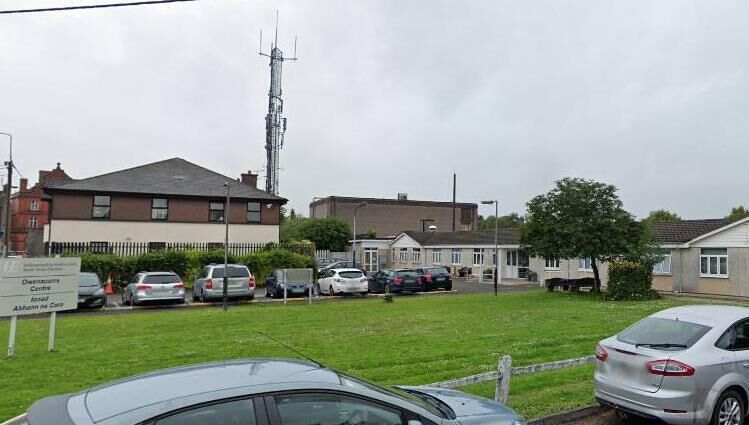To understand why the HSE is in such a financial mess, look no further than Cork's Glenwood House

Glenwood House in Carrigaline was bought by the HSE for €750,000 but left vacant for 45 months. Picture: Denis Scannell
In September 2023, the Department of Health was short-changed in that year’s budget to the tune of €800m.
After years of ballooning supplementary budgets the Department of Public Expenditure had finally lost its patience with the financial dysfunction in the health system.
The shortfall had the immediate real-world effect of seeing a recruitment freeze handed down by the HSE’s new chief executive Bernard Gloster, a move perhaps necessary given the straits the HSE found itself in but one which saw a lot of much-needed recruitment scotched across the health service.
When it comes to the public purse, the eyes of the public itself tend to glaze over, the larger the numbers get — think the €2.3bn National Children’s Hospital calamity.
And then there are the smaller projects — the bike sheds, the security huts. The smaller numbers which attract people’s attention to public waste by representing it in microcosm.
From that point of view, the strange tale of Glenwood House in Cork perhaps sums up precisely why the HSE got itself into the financial mess it did.
The building, a former guest-house in Carrigaline, played a key role in the story of the Owenacurra mental health facility, the Midleton centre marked for closure amid local opprobrium in the summer of 2021.
But that isn’t where the Glenwood story begins.

No, the purchase of the house was first posited in the HSE’s 2021 capital plan as a 14-bed replacement for Millfield House, a 24-hour-staffed mental health service in Blackpool which was, per the capital plan, “unfit for purpose”.
That particular facility had already been emptied due to social distancing concerns at the onset of covid in April 2020, with its occupants moving to Garnish House, a B&B being rented and cleaned for a staggering €43,400 a month.
This vast expense created a quandary for the HSE — it wasn’t justifiable long-term, and a long-term solution was what was needed given Millfield’s residents had been in situ for between one and 16 years.
Nevertheless, Glenwood in affluent Carrigaline was a strange match for Millfield, situated more than 10 miles away, with its residents facing the prospect of a major uprooting to a different community with different professional and community supports to what they had been used to.
Regardless, from November 2020, internal HSE correspondence underlines the urgency with which the Glenwood purchase was being treated. A solution had to be found for the exorbitant rent being paid at Garnish House.
At the same time, officials were advised that Glenwood would require retention (change of use) planning permission in order to be converted from a B&B to a dedicated mental health facility.
Two months later, the building was secured for the sum of €750,000. The relevant planning permission, however, was not applied for.
The building was procured from a sibling of the then head of mental health services for Cork and Kerry Kevin Morrison. While Morrison did recuse himself from decision-making surrounding the purchase, he was not recused from other property-related matters, including the closure of Owenacurra.
So, in January 2021, Glenwood House was purchased at pace for a specific purpose.
The building would not reopen in its new guise for a further 45 months.
The lack of planning was the first problem. Despite being warned in advance such permission would be needed, and despite receiving an enforcement order from Cork County Council in May 2021 to that effect after it emerged €500,000 (more than double the projected refurbishment costs) worth of works had been carried out at the site without the council’s say so, the relevant application was not lodged until March 2022.
That application would become subject to a saga of its own. Not unsurprisingly, the residents of Carrigaline were less than enamoured at what was happening at Glenwood, mostly because the communication from the HSE regarding its intentions was less than forthcoming.
The granting of permission by the local authority was appealed to An Bord Pleanála, dropping the whole project into the middle of the massive planning logjam that agency has been battling, for varied reasons, for most of the past three years.
The goalposts had begun to move in several ways by April 2022. By that stage, Millfield House had lain empty for two years, while the plan for Glenwood post-refurbishment had seen it drop from a 14-bed to a 10-bed service.
Then it emerged the HSE was going to move the residents of Millfield back to their old lodgings, a building which had previously been marked for decommissioning due to its being unfit for purpose.
Glenwood, meanwhile, was now being touted as a possible replacement facility for the 15-miles-distant Owenacurra, which despite being marked for closure by October 2021 had remained stubbornly open via a combination of determined local action and the fact there was simply nowhere for its residents to go.

Glenwood House was finally granted the planning permission it required in order to redesignate as a mental health service in October 2023.
Two months later, the rental at Garnish House in Cork City was finally vacated and its residents returned to a by-now refurbished Millfield House.
By March 2024, Glenwood was still vacant, with then Green TD Neasa Hourigan — a stalwart of the Save Owenacurra campaign — being told by the HSE the building’s future use was “currently being actively reviewed”.
It wasn’t until fully seven months later that, quite suddenly, the 10 occupants of a community mental health residence named Glenmalure House on Cork’s Blackrock Road were moved to Glenwood.
Just under four years after buying the property in a hurry, the building had finally found a purpose.
In order to sum up the significance of what happened with Glenwood, it’s necessary to do a few sums.
For starters, there is the eventual €1.27m which was spent buying and refurbishing the property in the first place.
Then there is the €1.84m spent renting and cleaning Garnish House between April 2020 and December 2023, a property the HSE had been in a position to purchase outright for €1.6m in July 2020 only to snub the opportunity.
We should not forget the more than €1m spent on providing security for the vacant Millfield House between April 2020 and December 2023 — a building the HSE had valued at just €630,000 just three years before.
Millfield was also itself renovated, with a number of apartments added to the complex, to the tune of €586,000 prior to its former residents being re-accommodated there.
You can conclude from those figures the HSE spent more than twice the cost of renovating Millfield on buying and refurbishing Glenwood, then went ahead and overhauled the former anyway, while the latter remained empty for four years.
You can further conclude the HSE effectively spent €4.7m, nearly €3m of it in dead money, to stand still given Millfield was never decommissioned and the purpose for which Glenwood was bought in the first place never materialised.
There are other figures — the HSE claimed when trying to justify the Owenacurra closure in March 2022 that it would cost an indefensible €8m to overhaul the site (a figure dismissed at the time by Ms Hourigan, formerly a practicing architect, as “extraordinary” and “out of whack with any construction cost”).
Nearly three years later, the HSE is now set to spend nearly €15m redeveloping the centre.
There have been positive outcomes to this saga. Glenwood is a fine building and an improvement on Glenmalure House. Owenacurra is to be reopened, Millfield has stayed open.
But the failure of strategy and procedure and poor budgeting seen every step of the way has been remarkable.
Extrapolate this situation to a national health service, and the reason the health budget grows to the tune of billions each year with no apparent reduction in waiting lists or trolley figures becomes a little clearer.
The HSE was asked if it would accept Glenwood remaining vacant for 45 months had been a sub-optimal result, and if there was an explanation for why the property was never used for either its first or second stated purposes, ie to replace first Millfield House and later Owenacurra.
The service was also asked if it would agree the move to close Owenacurra on financial grounds did not tally well with the millions spent renting Garnish House and providing security for Millfield, while Glenwood lay idle.
A spokesperson described Glenwood as “a fantastic and much-needed addition to the limited stock of community residential mental health units in the Cork region”, one which is making “a real, positive difference to the people living there”.
“The deficits in the building stock available for mental health residential facilities in the Cork area are well known. Glenwood House could have been a replacement for a number of buildings that are not of the quality we wish to provide for the people we support,” they added.
I’ll leave the final word on the matter to Liam Quaide, newly-appointed Social Democrats TD for Cork East and — via his work tracking everything that was happening at Glenwood, Millfield, and Owenacurra — a relentless thorn in the HSE’s side, who chooses to take the positives from what transpired.
“Notwithstanding the decision-making around its prolonged vacancy, I very much welcome the fact that Glenwood House has finally opened,” Mr Quaide said.
“It is a significant upgrade on Glenmalure House and is in a good location in Carrigaline. We need more of these community mental health residences throughout Cork.”















